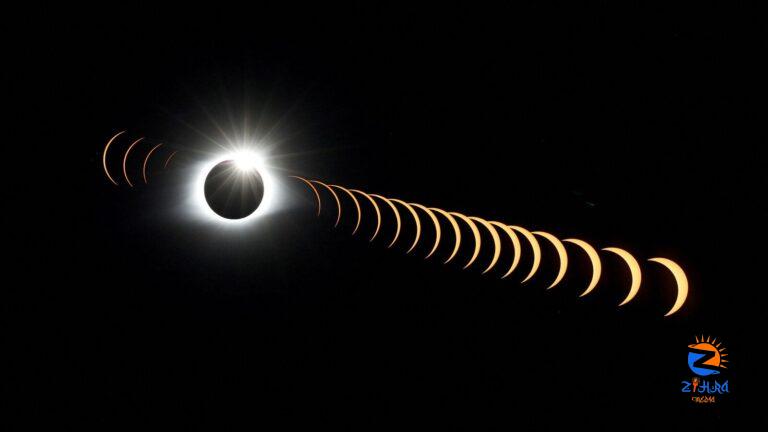
[ad_1]
Total Solar Eclipse on April 8: North America is set to witness a total solar eclipse next week on Monday (April 8). The cosmic event will start along Mexico’s Pacific coast, journeying through Texas and 14 other US states before heading out over Canada, as per an AP report.
A solar eclipse was last visible over North America in 2017.
So what is the significance of this solar eclipse?
- For one, this eclipse will last nearly twice as long and attract a larger audience compared to the one that crossed the entire United States in August 2017. During the event, the moon will block the sun for approximately 4 minutes and 28 seconds.
- The rare sight, usually seen in remote areas, will this time pass over major cities such as Dallas, Indianapolis, and Cleveland. An estimated 44 million people reside within the path of totality, with several hundred million more within 200 miles (320 kilometers), making it the largest eclipse audience ever in the continent.
- Almost everyone in North America will experience a partial eclipse, and for those unable to view it in person, NASA is providing live streaming online from various cities along the path of totality.
- The moon’s shadow is set to traverse North America diagonally, from the southwest to the northeast, casting communities along its path into momentary darkness. Totality will commence at Mazatlan, Mexico, and conclude at Newfoundland in Canada.
- Along the way, 15 US states, stretching from Texas to Maine, will witness totality, with glimpses of the phenomenon also visible in parts of Tennessee and Michigan.
- However, the visibility of the phenomenon will depend on the weather conditions. The National Weather Service is issuing daily updates on cloud cover forecasts along the eclipse’s path.
- During the total eclipse, watchers may catch sight of a comet along with four planets. Jupiter will appear to the left of the sun, while Venus will be on the right. Saturn and Mars will be positioned to the right of Venus, albeit less visible. Comet 12P/Pons-Brooks is currently passing by Earth, a phenomenon that occurs approximately every 71 years. Although faint, it will be situated close to Jupiter during the eclipse.
- After Monday’s eclipse, the next total solar eclipse is not expected until 2026. However, it will only graze the northern regions of the world, touching Greenland, Iceland, and Spain. In 2027, another eclipse will traverse Spain and northern Africa, with totality lasting an impressive 6 1/2 minutes.
- North Americans will have to wait until 2033 for the next total solar eclipse, which will be visible only in Alaska. In 2044, Western Canada, Montana, and North Dakota will enjoy prime viewing locations. Finally, in 2045, the United States will once again witness a coast-to-coast total solar eclipse.
When will solar eclipse be visible in India?
Cosmic lovers in India will not be able to view this event. Fans all over the world are headed to the US to witness the astronomical spectacle from the air.
Notably, in 2031, the Annular Solar Eclipse on May 21 will cover around 28.87 percent of the Sun and be visible across several Indian cities.
This “ring of fire” eclipse will grace the skies of Kerala and Tamil Nadu. The cities of Kochi, Alappuzha, Chalakudy, Kottayam, Tiruvalla, Pathanamthitta, Painavu, Gudalur (Theni), Theni, Madurai, Ilaiyangudi, Karaikudi, and Vedaranyam, will witness the 2031 solar eclipse.
It is advisable to avoid looking directly at the sun during a solar eclipse as it is unsafe and can cause damage to the eyes. Specialised eye protection for solar viewing must be worn to have a view of the astronomical event.
Unlock a world of Benefits! From insightful newsletters to real-time stock tracking, breaking news and a personalized newsfeed – it’s all here, just a click away! Login Now!
Download The Mint News App to get Daily Market Updates.
Published: 03 Apr 2024, 01:02 PM IST
[ad_2]